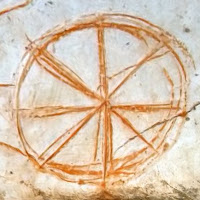< 24th September 2001 |
Index |
25th September 2011 >More from Tony and Felicity Dale during the afternoon session at Nettle Hill. This time the emphasis was more focussed on issues around church and church multiplication.
Tony and Felicity again took turns to speak to us. Tony began by contrasting addition and multiplication. In the 1960s and 70s many new, small churches were formed in homes in the UK. Some gifted leaders began to build larger and larger churches from these beginnings and in many cases there were hubs with new groups planted out from them. This is addition, and one of the problems is that it requires the training of more leaders.
Multiplication is very different and focusses instead on planting churches that plant churches that plant churches. To do this we need to find people of peace and influence among their own circles of friends, family or colleagues (for example). We don't need to find new leaders because the person of peace is the labourer. We only need to help them.
The acronym MAWL was explained. In the first generation we
Model church, but in the new groum in daily life.p gathered around a person of peace we
Assist. We do
not attempt to draw the newcomers into our own existing group. Members of the new group are encouraged to go out to find further people of peace.
In the third generation we
Watch them work independently although we're still there to answer questions and provide feedback. And in the fourth generation we
Leave. Meanwhile the person of peace we originally found will be modelling church in the second generation, assisting the third generation, watching the fourth and leaving the fifth.
This process can be hugely successful. In South Korea, for example, if we counted networks of small meetings as 'a church', the nineteen largest churches would all be such networks while the twentieth would be Jonggi Cho's
Full Gospel Church.
There are huge numbers of small, organic churches in the USA now, involving more people than the Southern Baptists.
An important point is that foundations can be laid only once, so they need to be laid right. This is likely to involve letting go of all kinds of things we might prefer to keep.
We did an exercise in thinking about a variety of biblical examples of people of peace, for example Lydia, the proconsul in Acts 13:7, and the Samaritan woman at the well. We were encouraged to ask ourselves what exactly it was that made those individuals people of peace. No two are the same and we need to learn to recognise them when we come across them in daily life.
We are 'fishers of men' and should think of ourselves like some of the disciples - commercial fishermen, not rod and line enthusiasts. We are not in the business of taking fish one at a time, but should be thinking in terms of netting large numbers. If we learn to live like Jesus in our everyday lives it
will be transformational!
We also watched the video '
Upside-Down Leadership'. Very good and well worth viewing, I'd recommend this to anyone.
Please note - this article is only a superficial account. When the recordings become available I'll add a link to them here so that you can hear what was said for yourself.< 24th September 2001 |
Index |
25th September 2011 >







